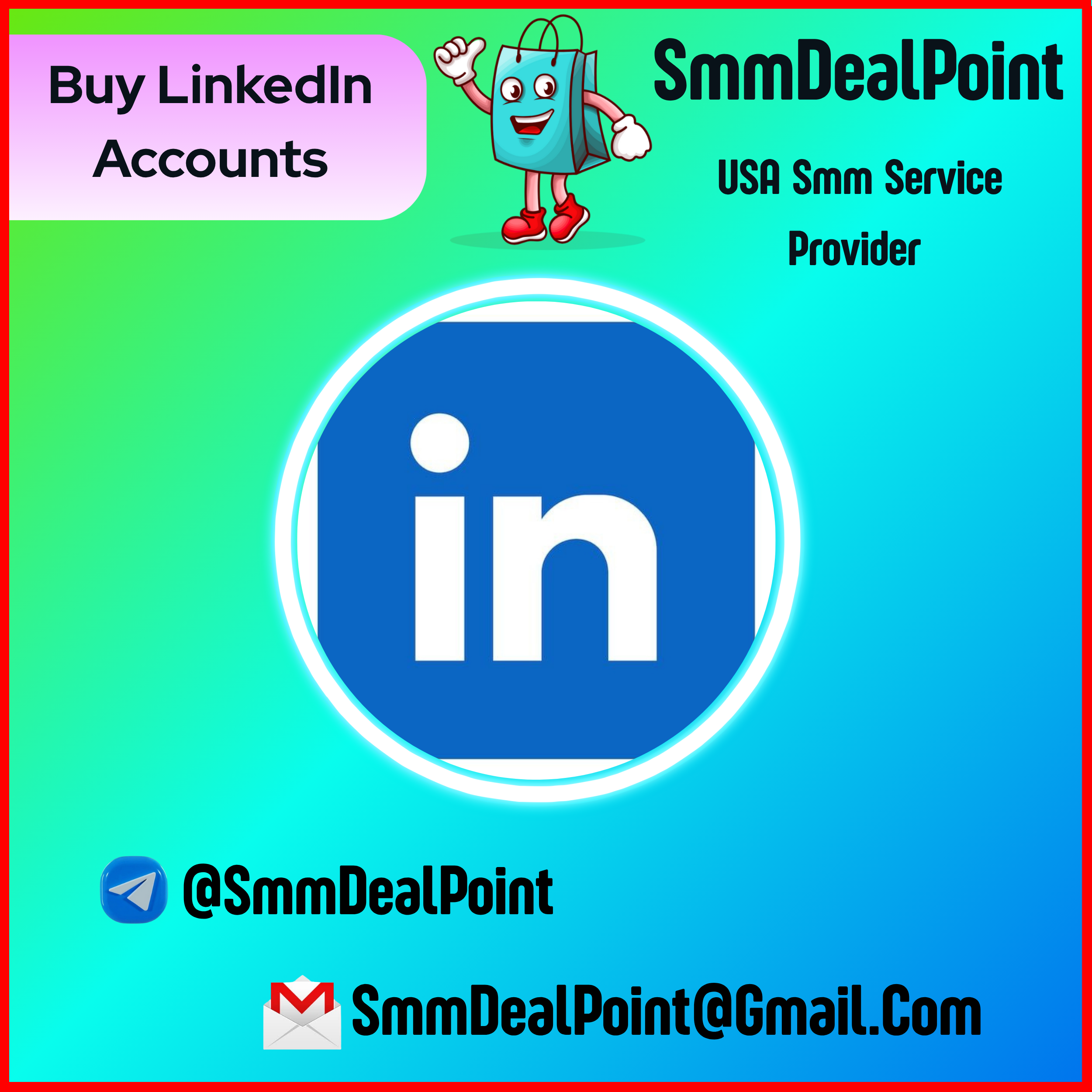Buy Sendgrid Accounts
Buy Sendgrid Accounts (now part of Twilio) is a leading transactional and marketing email platform used by startups, SMBs, and enterprises to send high volumes of email reliably. Whether you are creating a brand-new SendGrid account or managing a legacy one, proper setup and verification, domain authentication, IP management, and deliverability practices are essential to keep emails landing in inboxes, avoid blocks, and maintain sender reputation. This guide walks you through everything: account verification, domain authentication (SPF, DKIM, DMARC), IP warm-up, subusers and teams, API/webhook usage, compliance considerations, security best practices, and troubleshooting common problems.
Keywords: SendGrid setup, verify SendGrid account, SendGrid DKIM, IP warm up, deliverability best practices
Why you should never buy or accept others’ SendGrid accounts
Before we dive in, a short but critical reminder: purchasing or accepting transfer of a Buy Sendgrid Accounts is dangerous. Accounts come with sending history, reputation, and compliance obligations. Buying accounts:
-
Violates SendGrid’s Terms of Service and can lead to immediate suspension and loss of access.
-
Risks inherited poor reputation, blocks, or blacklisting that you didn’t cause.
-
Creates legal and compliance exposure if prior usage violated laws (spam, scams, or unlawful lists).
Always create and verify your own account, and if you need higher capabilities, follow SendGrid’s official upgrade paths (dedicated IPs, subusers, or enterprise onboarding).
 Creating and verifying a SendGrid account (step-by-step)
Creating and verifying a SendGrid account (step-by-step)
-
Sign up on the official site: Use a business email address (not a disposable or free domain) and fill in accurate organization details.
-
Confirm your email: Click the verification link sent to your inbox to activate the account.
-
Complete profile & billing: Add billing information and choose an appropriate plan — Essentials, Pro, or Enterprise based on volume and feature needs.
-
Enable 2FA: Immediately enable two-factor authentication for account security.
-
Verify sending identity: Add and verify the sending email address (from-address) and set up domain authentication (next section). SendGrid also requires some accounts to verify business details for higher sending tiers.
-
Compliance & Contact info: Provide physical mailing address and unsubscribe handling for compliance with CAN-SPAM and similar laws.
Verification and accurate business details help with onboarding approvals, reduce manual reviews, and improve trust with ISPs.
Domain authentication: SPF, DKIM, and DMARC
Domain authentication is the most important step to improve deliverability and prevent spoofing.
-
SPF (Sender Policy Framework): Add SendGrid’s sending IPs into your domain’s SPF record so receivers can confirm SendGrid is authorized to send mail for your domain. Typically this means adding
include:sendgrid.netto your SPF TXT record. -
DKIM (DomainKeys Identified Mail): DKIM cryptographically signs outbound messages. SendGrid offers domain signing keys; add the provided DKIM CNAME or TXT records to your DNS so recipients can verify message integrity.
-
DMARC (Domain-based Message Authentication, Reporting & Conformance): Publish a DMARC policy to specify how receivers should treat messages that fail SPF/DKIM. Start with a
p=nonepolicy to collect reports, then move toquarantineorrejectas confidence grows. DMARC helps protect your brand from phishing and spoofing.
Authenticate every sending domain you use (marketing, transactional), and verify propagation with tools (MXToolbox, DNSChecker) before sending large volumes.
Dedicated vs Shared IPs & IP warm-up
Buy Sendgrid Accounts offers shared IP pools (good for low-volume senders) and dedicated IPs (recommended when sending high volumes or when you need consistent reputation control).
-
Shared IP: Senders share IP reputation with others. Simpler and cost-effective for lower volumes.
-
Dedicated IP: Full control of IP reputation — required when you send volumes that warrant IP-level reputation management or when regulatory/partner requirements demand exclusivity.
IP Warm-up: When you get a new dedicated IP, you must warm it up by gradually increasing sending volume over days or weeks while sending to your most engaged recipients first. A robust warm-up plan reduces spam filtering risk and helps ISPs learn positive engagement signals. Typical warm-up steps:
-
Start with small volumes to your most active/opening segments.
-
Increase send volume daily following a warm-up schedule (SendGrid and deliverability resources provide percentage ramps).
-
Monitor bounces, spam complaints, opens, and click rates; pause scaling if issues appear.
Warm-up matters — a poorly warmed IP can be rejected or slow-delivered by major receivers.
List hygiene, segmentation & engagement
Deliverability depends more on recipient engagement than on raw volume. Best practices:
-
Use confirmed opt-in (double opt-in) for marketing lists to ensure recipients want your emails.
-
Remove hard bounces and inactive addresses regularly. A common rule: re-engage users who haven’t opened in 6–12 months with a re-permission campaign, then prune.
-
Segment by recency & behavior: send to active users first, cold users later.
-
Limit email frequency per user to avoid fatigue and complaints.
-
Personalize content to improve opens and clicks, which help sender reputation.
Poor list hygiene leads to bounces, spam traps, and ISPs reducing your deliverability.
Use SendGrid subusers, API keys, and team management
For organizations and platforms, SendGrid supports:
-
Subusers: Create subaccounts for individual apps, customers, or teams. Subusers isolate reputation and sending quotas, which is helpful for multi-tenant platforms.
-
API keys & granular scopes: Generate API keys with minimal permissions for apps and revoke keys when not needed. Avoid using master API keys in code.
-
Role-based access & audits: Use role permissions for team members (billing, marketing, support) and enable audit logging to track changes.
Isolating functions and delegating limited privileges reduces blast radius if credentials leak.
APIs, SMTP, and webhooks
Buy Sendgrid Accounts supports flexible sending methods:
-
SMTP relay: Simple integration using SMTP credentials; good for legacy systems.
-
Web API (v3): Recommended for robust, programmatic sending with templates, personalizations, and attachments.
-
Dynamic templates: Create business logic templates in the UI or via API for localization and A/B tests.
-
Event Webhooks: Receive real-time events (delivered, open, click, bounce, spam report) to update user records and trigger workflows. Use signed webhooks to validate authenticity.
Implement exponential retry logic for transient failures and store events reliably for analytics.
Deliverability monitoring & metrics to watch
Track these KPIs to maintain healthy sending:
-
Delivery rate — percentage of accepted by recipient servers.
-
Bounce rate — track soft vs hard bounces and remove hard bounce addresses.
-
Spam complaint rate — mail providers often consider >0.1% complaint rate a red flag.
-
Open & click rates — engagement signals to ISPs.
-
Unsubscribe rate — indicates content relevance and list health.
-
Blacklist status — monitor RBLs and take action if listed.
Use SendGrid’s suppression lists and delivery analytics; combine with third-party inbox placement testing for critical campaigns.
Compliance: CAN-SPAM, CASL, GDPR, and privacy
Email senders must comply with legal frameworks:
-
CAN-SPAM (US): Provide accurate headers, an unsubscribe link, and a valid physical address. Honor opt-outs promptly.
-
CASL (Canada): Requires express consent in most cases.
-
GDPR (EU): Ensure lawful basis for processing personal data, offer data subject rights, and document consent where used.
-
Other local laws: Verify country-specific rules for marketing and transactional messaging.
Maintain a clear privacy policy, store consent records, and ensure data export/deletion processes for user requests.
Security best practices
Protect your SendGrid account and sending pipeline:
-
Enable 2FA for all users.
-
Enforce least privilege with scoped API keys and per-team access.
-
Rotate credentials periodically and after staff changes.
-
Monitor account activity and set up billing alerts for sudden usage spikes.
-
Use webhook signing to verify incoming events.
-
Protect DNS (where DKIM/SPF records live) with DNS provider access controls and, where available, DNSSEC.
Security lapses can lead to mass spam from your domain and long-term reputation damage.
Handling legacy accounts & migrations
Legacy accounts may have outdated settings or reputation issues. If you inherit a legacy platform:
-
Audit sending streams and domains in use.
-
Authenticate all domains and consolidate sending domains where possible.
-
Evaluate IP reputation before making heavy sends; consider a new dedicated IP warm-up.
-
Purge poor lists — legacy lists often contain stale or trap addresses.
-
Implement progressive send patterns to validate engagement.
When migrating providers, maintain parallel sending and monitor inbound complaints; inform users of changes and preserve unsubscribe behavior.
Troubleshooting common issues
-
High bounce rates: Verify SPF/DKIM, check list hygiene, and validate domain.
-
Low delivery / slow inbox placement: Warm up IP, improve engagement, and check blacklist status.
-
Spike in spam complaints: Audit recent campaigns and remove unhappy segments; ensure unsubscribe links are visible.
-
Blocked or throttled by a provider: Contact SendGrid support and follow ISP remediation steps (provide authentication proof, sample headers, and sending patterns).
Document actions and changes to speed up support escalations.
 Cost considerations & scaling
Cost considerations & scaling
-
Starter/Essentials plans work for low-volume senders.
-
Pro/Enterprise plans offer dedicated IPs, SLAs, and advanced deliverability support.
-
Dedicated IPs are an additional cost but necessary for high volume.
-
Consider managed deliverability services or an in-house deliverability engineer as you scale.
Budget for warm-up time and potential mailbox provider remediation efforts.
FAQs (short & SEO-friendly)
do I need DKIM and SPF for Buy Sendgrid Accounts ?
Yes. Both are essential; DKIM provides signature validation and SPF designates SendGrid as an authorized sender.
When should I get a dedicated IP?
If you send high volumes (typically >100k/month), need consistent reputation or comply with partners requiring dedicated IPs. Start warming the IP immediately after allocation.
How long does IP warm-up take?
Usually several days to a few weeks depending on volume growth and engagement signals. Use a gradual ramp schedule.
Can I use SendGrid for transactional and marketing mail?
Yes, but separate sending streams (subusers or separate API keys) and templates help manage reputation and compliance.
Conclusion
Proper Buy Sendgrid Accounts setup — authenticating domains, warming IPs, maintaining list hygiene, using subusers and scoped API keys, monitoring deliverability, and following compliance — is the sustainable path to reliable email. Avoid shortcuts like buying accounts: they risk suspension, Blacklistings, and legal trouble. Create and verify your own account, follow best practices above, and scale responsibly for best-in-class deliverability.



Reviews
There are no reviews yet.